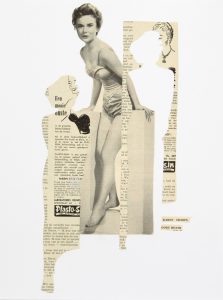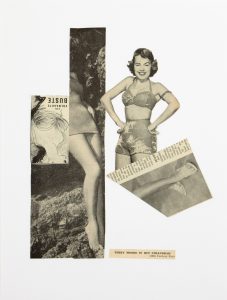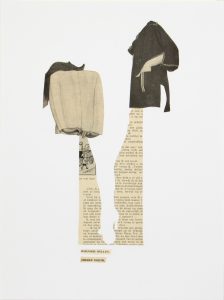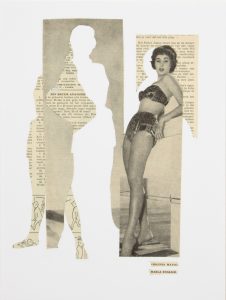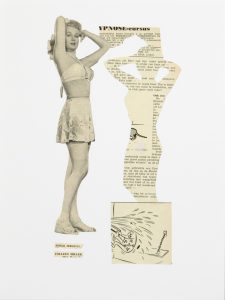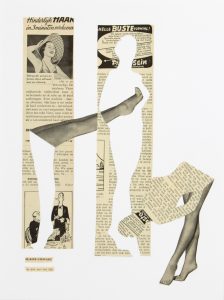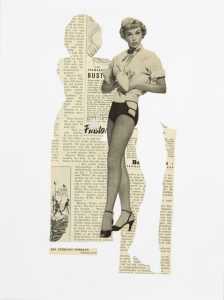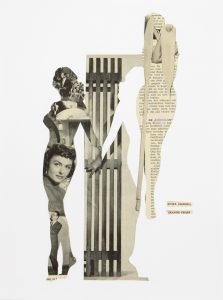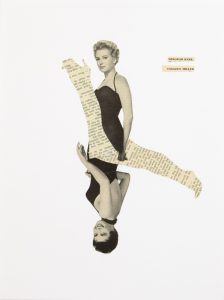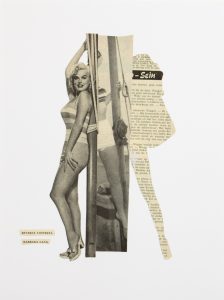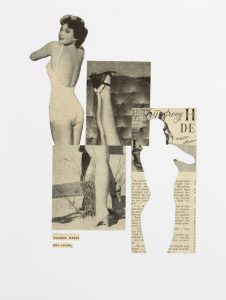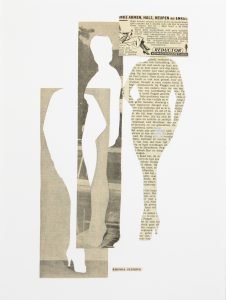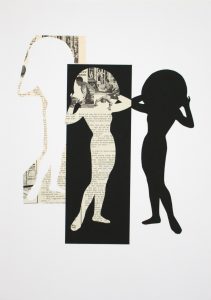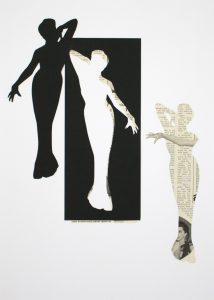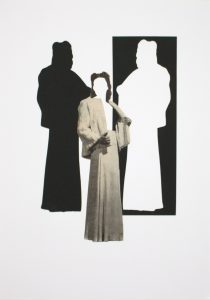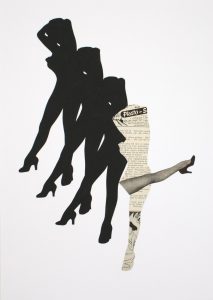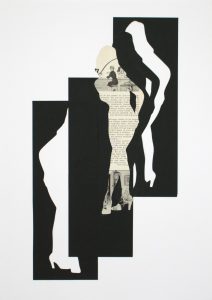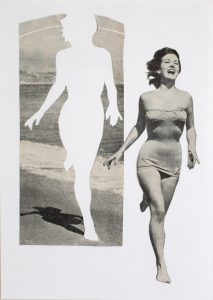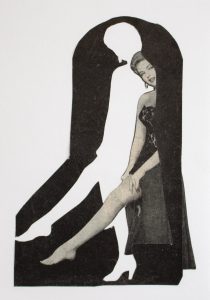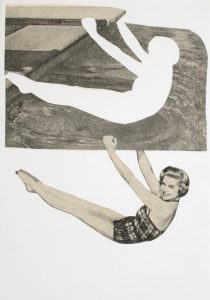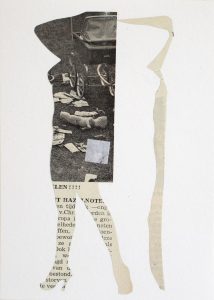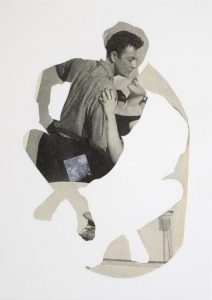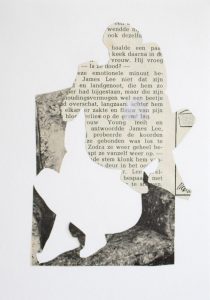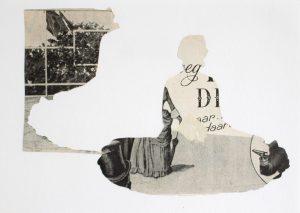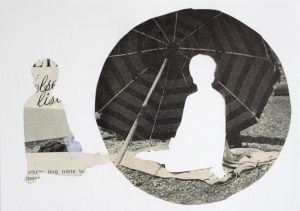POP-UP: Schnittserie, Anatomy of a collection by Leonor Faber-Jonker (collage)
30/8/2019 -14/9/2019
Vernissage Friday 30 August 19h00
with a performance by Vlada Predelina
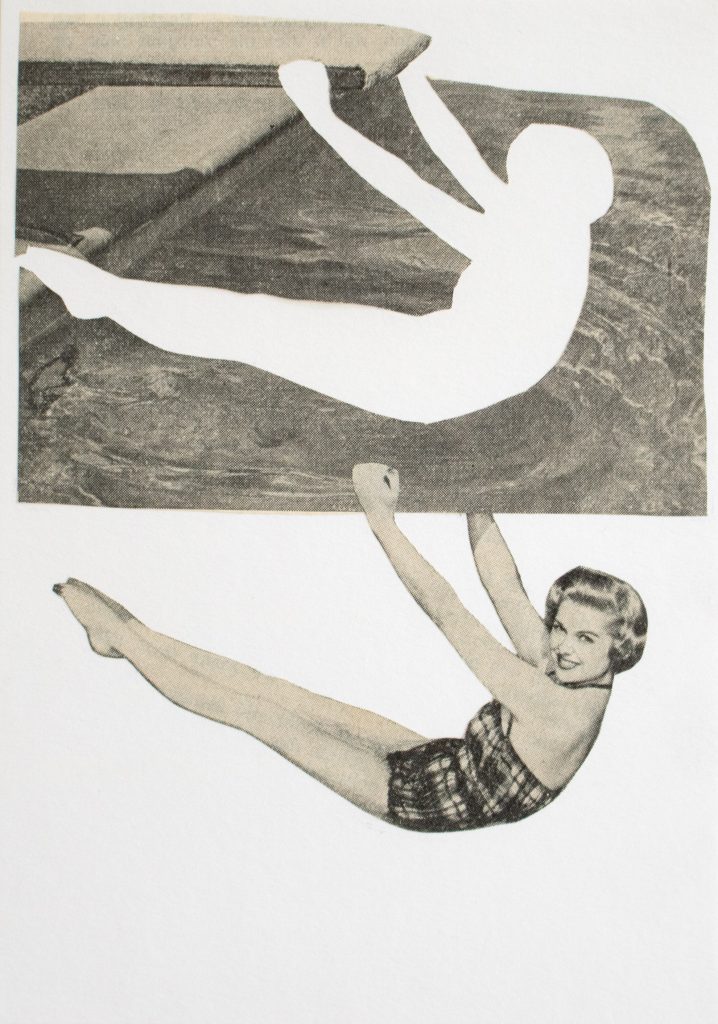
The second POP-UP expo in a row brings us Leonor Faber-Jonker with her Schnittserie collages. These are dissections of an inherited collection made up of sparsely clad starlets – De Lach’s main attraction. The collection’s ring binders are carrousels of bare legs, bare backs, bare feet, dreamy looks and seductive smiles. Turn the pictures around and a commercial for ‘Plasto-Sein’ seduces its female readers to ‘develop’, ‘improve’ or ‘diminish’ their busts. It’s up to the artist to try and imagine what made the collector scour these magazines for pictures of pretty ladies. Was she herself glamorous? Bored? In vain? Obsessive? Artistic minded?
The collages of Leonor Faber-Jonker are a physical rendering of the layers of meaning of such objects as well as an exploration of the constraints and possibilities of de- and reconstructing existing image material: serendipity follows sacrilege.
Scroll down for more information about the creative process and insights
Leonor Faber-Jonker is an author, researcher, and artist with an interest in the entanglements
between materiality, memory and meaning. In her collages, photographs and writing she investigates
the practices surrounding (colonial) artefacts, collections, human remains, photographs, statues and
places. Her collages are a physical rendering of the layers of meaning of such objects as well as an
exploration of the constraints and possibilities of de- and reconstructing existing image material:
serendipity follows sacrilege. Leonor Faber-Jonker lives and works in Rotterdam, The Netherlands.
www.leonorfaberjonker.nl @leonorfaberjonker
The Works
Schnittserie I-XII
no frame € 275,-
framed 40 x 50 cm € 325,-
Schnittserie XVIII-XXV
no frame € 125,-
framed 18 x 24 cm € 150,-
More about the Schnittserie
Anatomy of a collection
The Schnittserie collages are dissections of a collection. A little while back, I came into possession of a peculiar inheritance: over twenty ring binders filled with hundreds of yellowed pictures of actresses and fashion models. They had belonged to an elderly lady whom I never got to meet. She had carefully cut them out of 1950s feel-good magazine De Lach (‘the smile’), kept them for decades and finally put them all in ring binders towards the end of her life. I was in luck: careful not to damage the pictures, she had used small pieces of double-sided tape to keep them in place. Great collage material. But as I started peeling off the pictures, they became more than just that. Fascinated by the singular system of her collection, I decided to dissect it, laying bare its meanings, contexts, and materiality.
The bulk of the collection is made up of sparsely clad starlets – De Lach’s main attraction. The ring binders are carrousels of bare legs, bare backs, bare feet, dreamy looks and seductive smiles. Turn the pictures around and the male gaze crops up again: commercials for ‘Plasto-Sein’ offer readers an external treatment to ‘develop’, ‘improve’ or ‘diminish’ their busts – because “a BEAUTIFUL BUST gives any woman greater charm and attractiveness”. Another ad, this one for a hair removal cream, reminds the reader that ‘hairy arms and legs compromise your charm’. Such ads are alternated with sexist jokes and poorly written stories. I try to imagine the collector. What possessed her to scour these magazines for pictures of pretty ladies? Was she glamorous? Bored? Vain? Obsessive? Artistic?
Many of the pictures are paired by the collector: two women with sunhats, two women with crossed legs, two women in stripes. Each collage is a reinterpretation of such a pair. By cutting them out, folding them or flipping them over, echoing and multiplying the figures, I deliberately enhance the generic nature of these images. In doing so, I translate the system into my own, following the collector’s cues, creating a new series from an existing one. As I glued over the smiling faces of half-forgotten stars, I realized I’m making things invisible as well as visible. It is the nature of dissection: destroying to uncover. As in any dissection, things got messy at times. The brittle material resisted my endeavour, tearing unexpectedly whenever I applied too much pressure. The resulting collages are the physical rendering of layers of meaning, of constraints and possibilities. Serendipity follows sacrilege.

